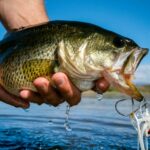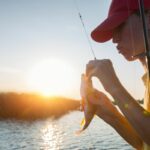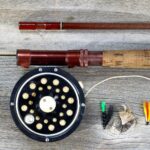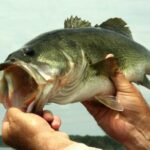When it comes to fishing for trout, the most commonly known method is fly fishing, however, you can catch trout through bait fishing. But what is the best rig to use for trout fishing? We look at the nine most important trout rigs that you should consider.
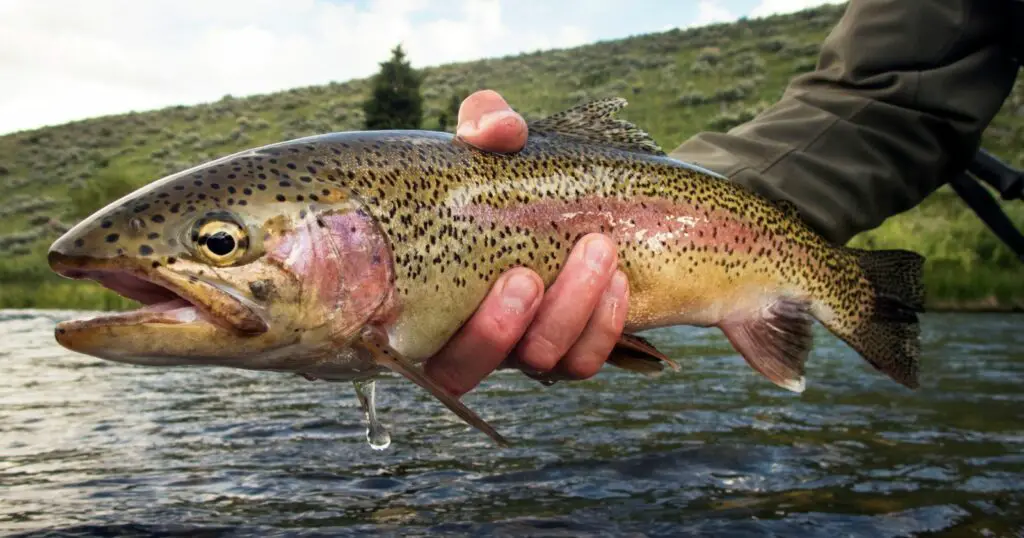
In the US, there are several different varieties of trout, but the three most commonly fished for are the brook, brown and rainbow trout.They are typically found in bodies of freshwater such as rivers, streams, lakes and ponds.
Trout can survive in different waters and conditions, with their coloring and patterns changing according to their environment. However, trout can change color according to the different seasons of the year as when they are breeding.
Cool waters are the trout’s preferred habitat, with temperatures ranging between 50–60 °F. They feed on aquatic plants,invertebrates, crustaceans, worms and small fish.
Trout Fishing Techniques
The objective of fishing is to make the trout think that the object in front of them is a natural food source and entice them to bite. This is why artificial flies are used in fly fishing and minnows and worms are used in bait fishing. Let’s take a look at both methods.
Fly Fishing For Trout
Fly fishing is the most commonly used method for catching trout. Fly-fishing is done using a special rod called unsurprisingly a fly rod and is combined with a reel and specially weighted line. The lure to catch the trout is called an artificial fly, and comes in many varieties.
While popular, fly fishing is something that takes time to become good at. Not only are the rod, reel, line and lure quite specialized, but the casting method is also very different from other forms of angling.
In the US, fly fishing in freshwater, as opposed to saltwater, is distinguished between warm water species like bass and cold water species like salmon and trout. The techniques used will also differ according to the habitat, e.g., lakes, rivers, or the ocean.
Bait Fishing For Trout
The other method for catching trout is bait fishing. Unlike fly fishing, you will be using some form of either live bait, artificial lures or a dough based bait often referred to as powerbait after the most well known make.
As trout grow they will move away from eating flies and insects and on to bigger prey such as small fish, crustaceans and worms. This is where bait fishing comes in, it is targeting the more mature fish with food they would more likely eat.
If you are a beginner or novice angler, bait fishing may be the easier method to try and catch trout. It is a straightforward way to lure and catch fish, and the set-up and casting methods may be more easily learned.
Of course, either fly-fishing or bait fishing can be employed to catch trout, and there is no ‘best’ way. It is a question of preference for each angler, some people love the elegance of fly fishing while others regard bait fishing as more practical.
What Is The Best Rig To Catch Trout?
There are three basic rigs that you can use to catch trout in almost any type of water or season of the year. Each one can be adapted to suit different situations. We’ll give an overview of each type as well as a description of the variations of each one.
Bobber Rigs
First things first, what is a bobber? Well, it is basically a float or buoy that is attached to your fishing line used as a marker and serves as a visual aid to where your bait is.
A bobber suspends the hook with your bait and can be used to carry the baited hook to areas that would otherwise be difficult to access. It also allows you to control the depth at which your bait is presented.
Bobbers come in different sizes and shapes, such as oval or pencil shaped, but the most commonly used is a round bobber. They are typically made of plastic, balsa wood or cork.
So in essence, bobber rigs present your baited hook suspended underneath the bobber or float. Fishing with bobbers is also called float fishing for obvious reasons.
Let’s examine in detail the different types of bobber rigs that you can use to catch trout.
Fixed Bobber Rig
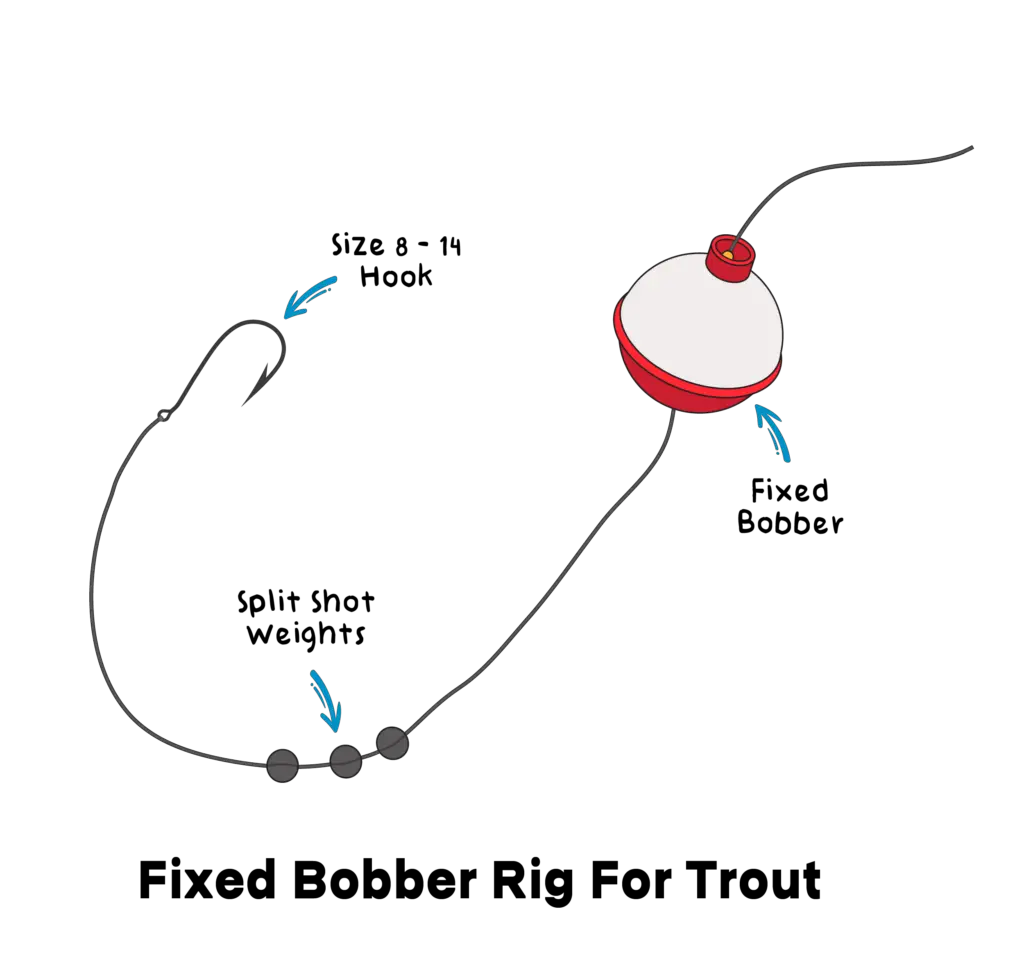
A fixed bobber rig is one of the easiest to put together and an excellent way for novice anglers to begin bait fishing for trout. It only has a few elements which are straightforward and uncomplicated even for a beginner.
The fixed bobber is attached to the fishing line through recessed hooks or via a spring in the bobber. Below the bobber, weights are fixed to the line to weigh it down in the water. At the end of the fishing line will be the baited hook.
How To Tie A Fixed Bobber Rig
- Attach the float or bobber to the fishing line by the recessed hooks or spring. A round bobber can be used, but a pencil shaped bobber will not give as much resistance if a fish takes your bait.
- Then attach the end of the line to your choice of hook.
- Put split shot on the line. Split shot are small round pieces of metal cut half through their diameter and attached to fishing line to give it weight.
- Add your chosen bait to the hook.
How To Use It
Once your bait is on the hook, cast out to where you want to fish. The combination of the bobber and weights will take the baited hook to the required depth.
You may find that the length of line beneath the bobber can make casting tricky. The longer the line between the bobber and the hook, the higher the likelihood of getting your line tangled.
When To Use It
This rig is good to use in shallow waters, but can also be used above weed beds to keep your hook from snagging. Trout that are cruising just below the surface are a good target too. A windy day or when insects are hatching is typically when you will find trout in this area.
Slip Bobber Rig
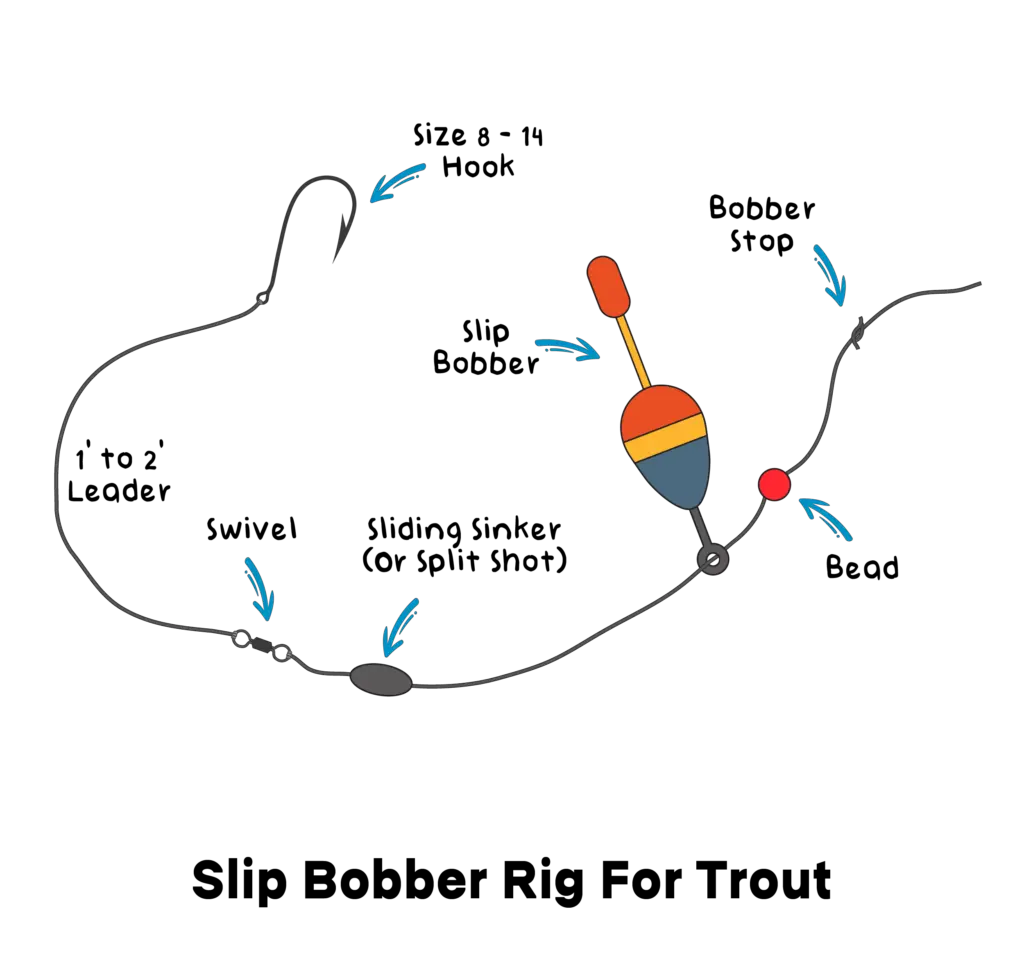
The slip bobber rig is one of the most versatile and is typically part of any trout angler’s repertoire. It can be adapted for a wide range of habitats and used for almost any depth of fishing by changing where you place the bobber stop.
Unlike a fixed bobber a slip bobber can move freely up and down the fishing line. They are open at both the top and bottom end so that they can be threaded onto your line. To set the depth that you want to fish at, you put a bobber stop on the line.
A bobber stop is a small piece of plastic, rubber or string that is tied around your line. It has to be just slightly bigger than the diameter of your bobber opening in order to stop the bobber where you want.
How To Tie A Slip Bobber Rig
- Tie a bobber stop onto your fishing line at the depth that you want to fish. For example, if you want to fish at eight feet, then tie the bobber stop eight feet from the end of your fishing line.
- Slide a plastic bead onto the line, then thread the slip bobber on through the top and bottom openings.
- Add some split shot to the line beneath the slip bobber to prevent it from sliding off the line and to add weight to the rig.
- Now tie on your hook using a palomar knot. You can add more split shot at this point and adjust the position of the bobber stop if needed.
- If you are using live bait, add a swivel between the bobber and the hook to prevent the line becoming twisted.
How To Use It
A slip bobber rig has the advantage of being highly versatile, allowing you to fish at a range of depths. You can adjust it as needed to the optimum depth depending on conditions and the water you are fishing.
Once you know the depth that the fish are feeding, you can cast out. Casting with a slip bobber rig is easier than with a fixed bobber rig because the bobber will always stay near the end of the fishing line close to the hook.
Ensure the wind is at your back or side for ease of casting as well as for greater distance and accuracy.
When To Use It
This rig is best used for fishing mid-water where you are struggling to reach with a fixed bobber, and it is not possible with a bottom feeding rig.
If you are using a slip bobber rig with a powerbait or similar dough bait, you may need to add extra split shot to the rig. This is because this type of bait is buoyant and is best used on the bottom
A bottom fishing rig presents your bait in an optimum position for trout when they are feeding. Trout spend the majority of their time feeding close to the bottom of lakes, rivers and streams as they prefer cool conditions away from the glare of the sun.
Bottom Fishing Rigs
So your chances of catching trout are increased by fishing on or close to the bottom of the water. However, the time of year, temperature, cloud cover and size of the water will all affect where the trout feed, at what time of day and for how long.
Slip Sinker Rig
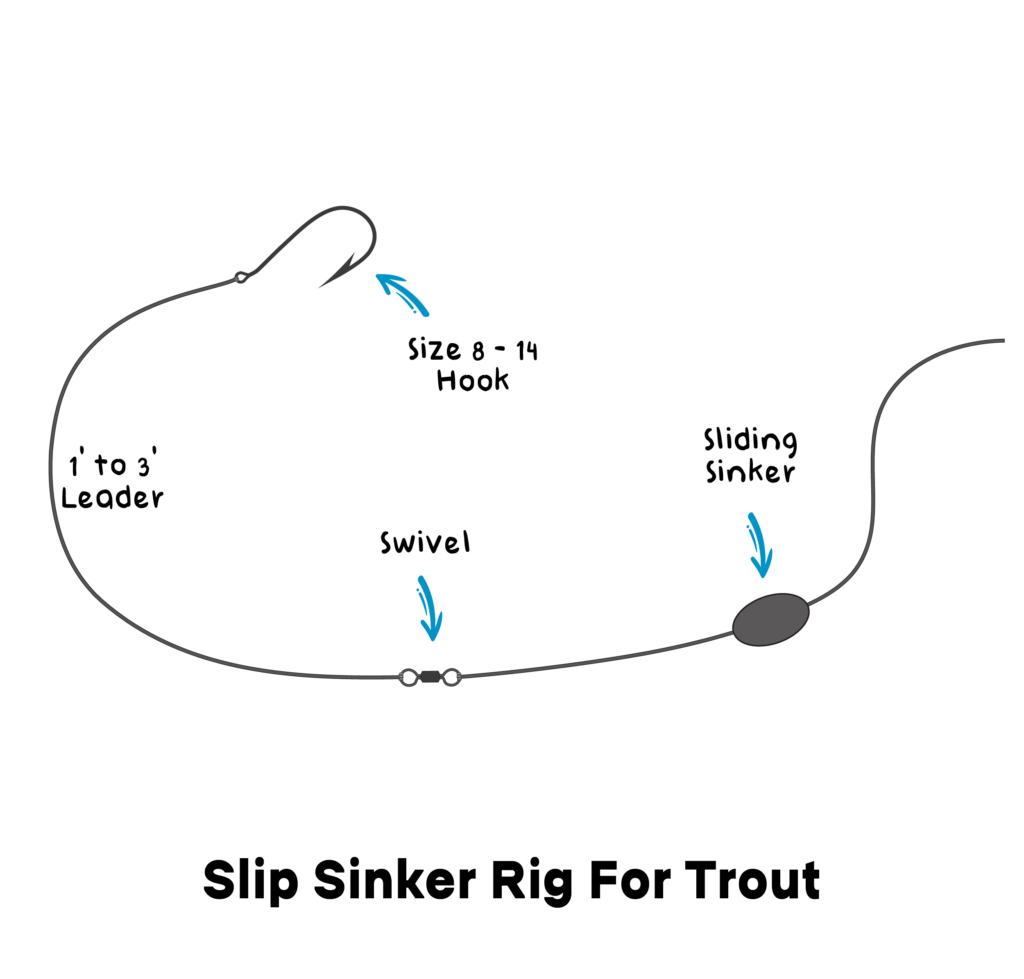
This is one of the most simple bottom fishing rigs and can be used for trout and other freshwater fish. Here there is no bobber to suspend the rig off of the bottom. Instead, a lead sinks to the floor and the bait floats just above and off the bottom of the lake, river or stream.
This is an easy rig even for beginners or novice anglers and will perform well in most situations. The beauty of this rig is that it can be adapted and adjusted to different types of bait and can be made to look as natural as possible in order to lure trout in.
How To Tie A Slip Sinker Rig
- Thread a sliding sinker onto your fishing line, this can be either an egg or bullet sinker weighing ⅛ or ¼ ounce.
- You can add a plastic bead to cushion impact from the sinker on the knot of the swivel.
- Now tie your line to a barrel swivel.
- Put a leader line on the other end of the swivel.
- Attach your chosen hook size to the other end of the leader line.
- Secure your bait onto the hook.
How To Use It
Use this rig when you have found a promising spot in the water to fish for trout. Then cast out and wait for the fish to bite, regularly checking that your bait is still intact. This is a passive form of fishing, but if the rig and bait are presented correctly it can be very effective.
The bait should hover above the bottom and when taken by a trout should allow it to run with it without feeling any resistance. This makes them less cautious and makes a catch more likely for you.
When To Use It
This rig can cover a lot of water and so is ideal to use from shore and works well in waters that hold trout deeper than ten feet. It is important to use the slip sinker rig with a buoyant bait such as dough bait or air injected worms.
This is because it is designed so that the weight of the sliding sinker makes this part of the line sit on the bottom. But trout don’t feed directly off the bottom very much, more often taking food from just above the floor. So you want your bait to be visible at this level to lure them in.
Carolina Rig
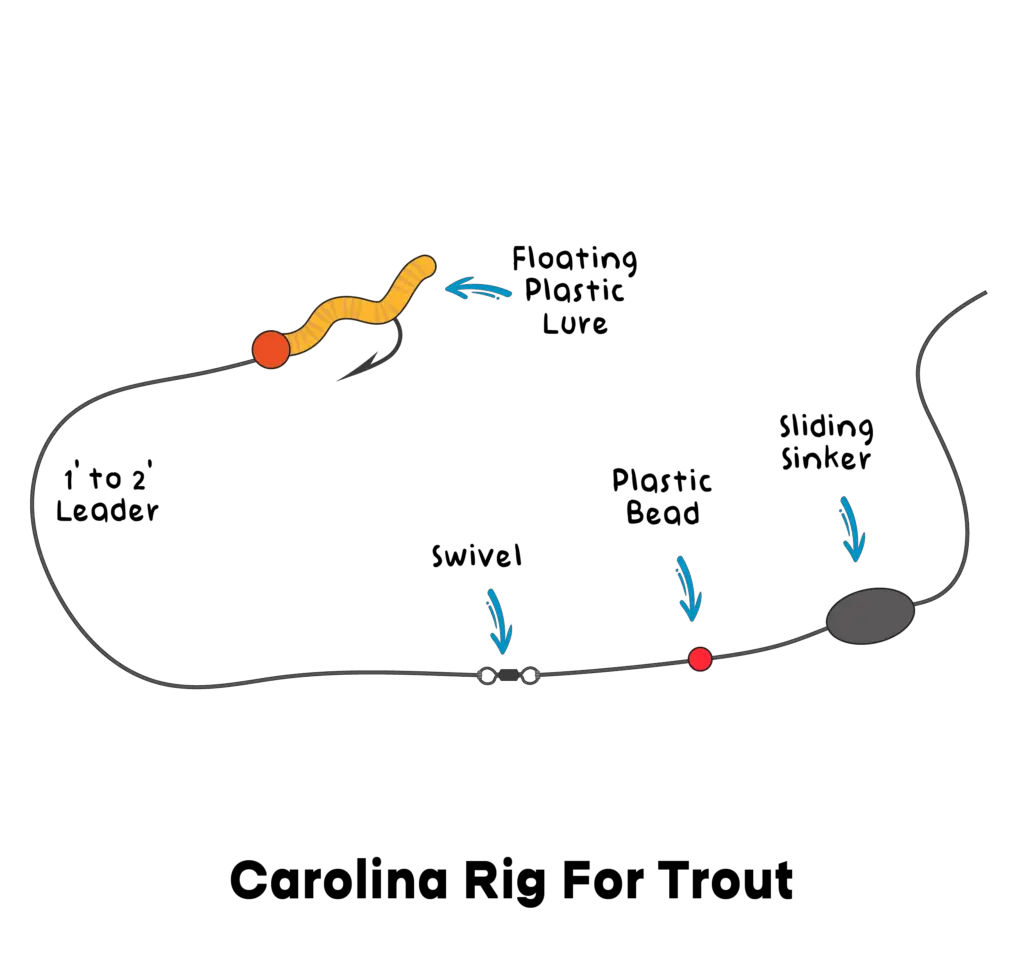
A Carolina rig is very similar to a slip sinker rig, the difference being how it is fished.
A slip sinker rig is fished passively, leaving the rig weighted on the bottom and the bait floating a foot or two above.
A Carolina rig is fished actively with lures such as plastic worms or lizards. The lure is then slowly retrieved to attract the trout. The ability of the lure to float will determine whether it stays above the weight, sinks slowly or goes directly to the bottom.
How To Tie A Carolina Rig
- Thread your line through a sliding sinker around ¼ or ⅛ ounce.
- Slide a plastic bead onto the line to act as a buffer to the weight of the sliding sinker.
- Now tie on a swivel to the fishing line.
- Attach a one to two foot leader onto the swivel.
- Secure your floating lure onto the end of the leader
When To Use It
This rig can be used in rivers, lakes, ponds or reservoirs when trout are feeding close to the bottom. While it is commonly used for bass fishing it is equally effective for trout fishing if it is set up and applied correctly.
As trout frequently feed close to the bottom a Carolina rig has a high chance of success if the lure is presented well and buoyant enough to stay off the floor of the lake or pond.
How To Use It
Cast the lure out and wait until the sinker has dropped to the lake or river bed, then slowly retrieve the lure using a jigging motion to attract the trout.
Split Shot Rig
A split shot rig is quite simple but an elegant way to take the Carolina rig and add some finesse to it. It takes its name from using two or three split shot weights instead of a sliding sinker on the line.
This is the main difference between the two rigs although you also don’t have to use a bead here as the split shot remains in place unlike the sliding sinker which moves up and down the line.
How To Tie A Split Shot Rig
- Tie a swivel onto the end of your main fishing line.
- Attach two or three split shot weights above the swivel and one to two feet up from the hook.
- Now tie a one to two foot leader onto the swivel.
- Attach your hook to the other end of the leader line.
- Finally thread a plastic floating lure onto the hook.
When To Use It
This is an excellent rig to use in heavily fished waters or where the trout have become more wary of other rigs. It can be used in small rivers and creeks. Particularly useful in clear water this rig is more difficult for trout to spot and so increases the chance of a catch.
How To Use It
A split shot rig cast out will drift through the water and come to rest on the bottom. It is meant to mimic the natural movement of prey and it is this that attracts the trout. If there is too much weight on the line the lure will sink too fast and look unnatural.
It also can’t be cast too far so will not have long range or coverage and is best reserved for smaller bodies of water.
Drop Shot Rig

Another bottom fishing rig is the drop shot. One of the best things about this rig is that it can be dropped into the strike zone and left there. It is most often used with plastic lures and was originally developed as a finesse technique to target heavily pressured bass in Japan.
For trout fishing it is an adaptable rig that can be adjusted for different depths, weather conditions and types of habitat. Lighter set ups will be ideal for small rivers or creeks while fishing for lake trout may require a heavier set up.
How To Tie A Drop Shot Rig
- Tie a 4- 5 foot leader to your main fishing line using a double uni or Palomar knot.
- Attach a ¼ or ⅛ ounce weight to the end of the leader.
- Take the leader line and create a loop about a foot from the weight.
- Pass the loop through the eye of the hook from below.
- Tie an overhand knot using the loop.
- Now pass the hook through the loop, wetting the line and pulling it tight.
When To Use It
Using a drop shot rig for trout fishing is considered a finesse technique and this is certainly where the idea originated, albeit for bass and not trout. It is a very versatile rig and can be successfully used in lakes, rivers, ponds and creeks.
It will work especially well in clear water, currents, deep water and difficult conditions. Waters that have been heavily fished are also a good choice for it. Remember to check local regulations before using this rig as it may not be allowed on all waters.
How To Use It
Cast the rig out and then slowly begin to retrieve it. This is best done by dragging the weight along the bottom of the river, stream or lake with occasional hops. If you have found a strike zone you can instead leave the lure in place and occasionally jiggle it to attract the trout.
There are other ways you can use with this rig such as deadsticking which means leaving the rig in place for extended periods. Locating fish electronically and then vertically dropping the rig in is another good method. It also works well in difficult or cold conditions.
Lure Rigs
Lure rigs enable you to cast and then actively retrieve your artificial lure. The previous six trout rigs can all be used either with live bait, dough ball bait or artificial lures. The final three most important trout rigs that we will look at are used only with lures.
A lure rig can be a lot more straightforward to set up than a bait rig with not as many segments to fit together. There are so many different lures to choose from, for different types of water and mimicking a large variety of prey to attract hungry trout.
Trying out different types of lures will help you to find the best ones for you and where you like to fish. The most important trout rigs at the end of the day are the ones that catch fish for you time and time again. Let’s take a look at three types of lure rigs for trout fishing.
Spinner Rig
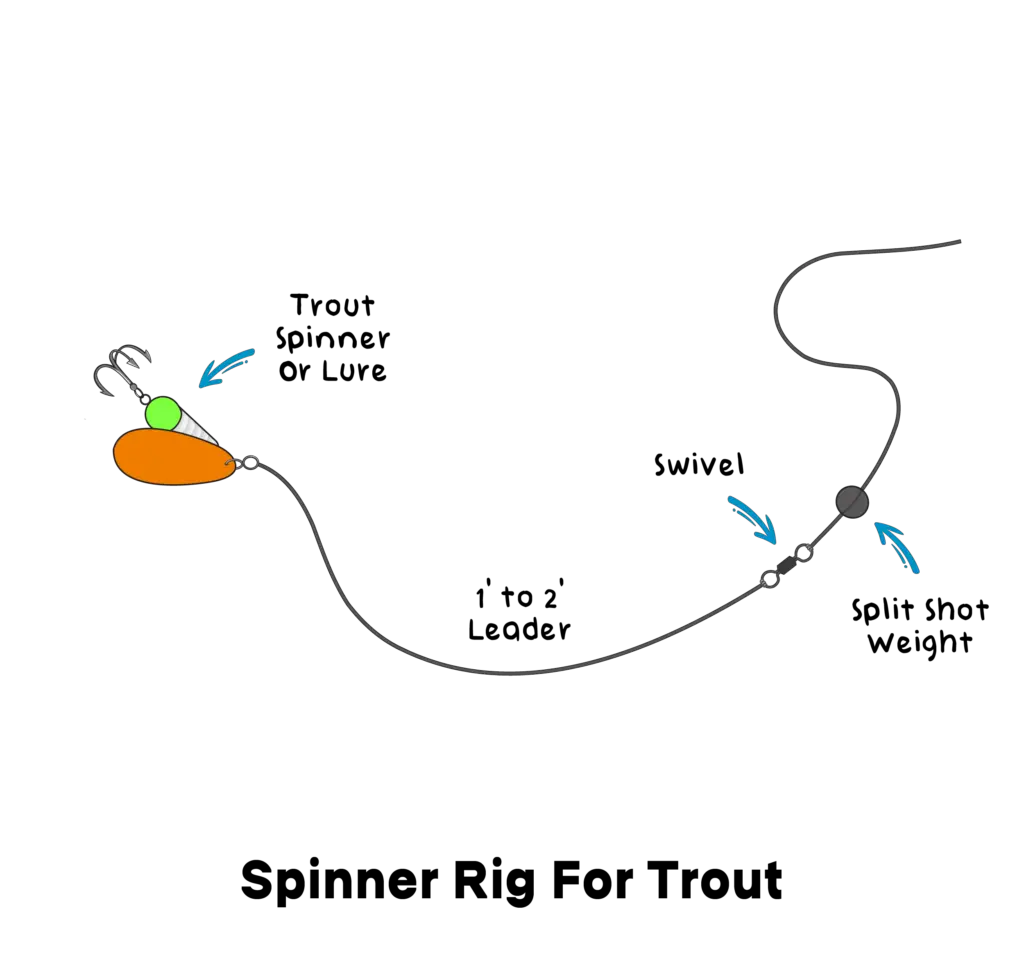
The most commonly used lure rig when fishing for trout, the spinner rig can be used with many different lures. However, it is typically used with a spinner such as a panther martin or rooster tail.
A spinner is so called because as it moves the blades on its sides begin to spin. This motion catches the light and creates small vibrations in the water attracting fish. They are very versatile and are used to catch trout in shallow or deep water.
How To Tie A Spinner Rig
- Tie your main fishing line to a swivel.
- Add one to two split shot above it.
- Attach a 2-4 foot leader to the free end of the swivel.
- Tie the lure to the other end of the leader.
- Adjust the number of split shot to the weight of the lure.
When To Use It
The spinner rig can be used in almost any water body from lakes to rivers and streams and is extremely versatile. It is often most effective in mid-water but it is also effective in deeper water where trout are more likely to be.
How To Use It
Cast out your rig and then start to retrieve it. How quickly or slowly you reel the lure back in will depend on how deep you want to fish. You can adjust your retrieval speed with each cast and even try letting the lure go to the bottom but watch out for snagging on weed beds.
Trout Rig With Bobber & Jig
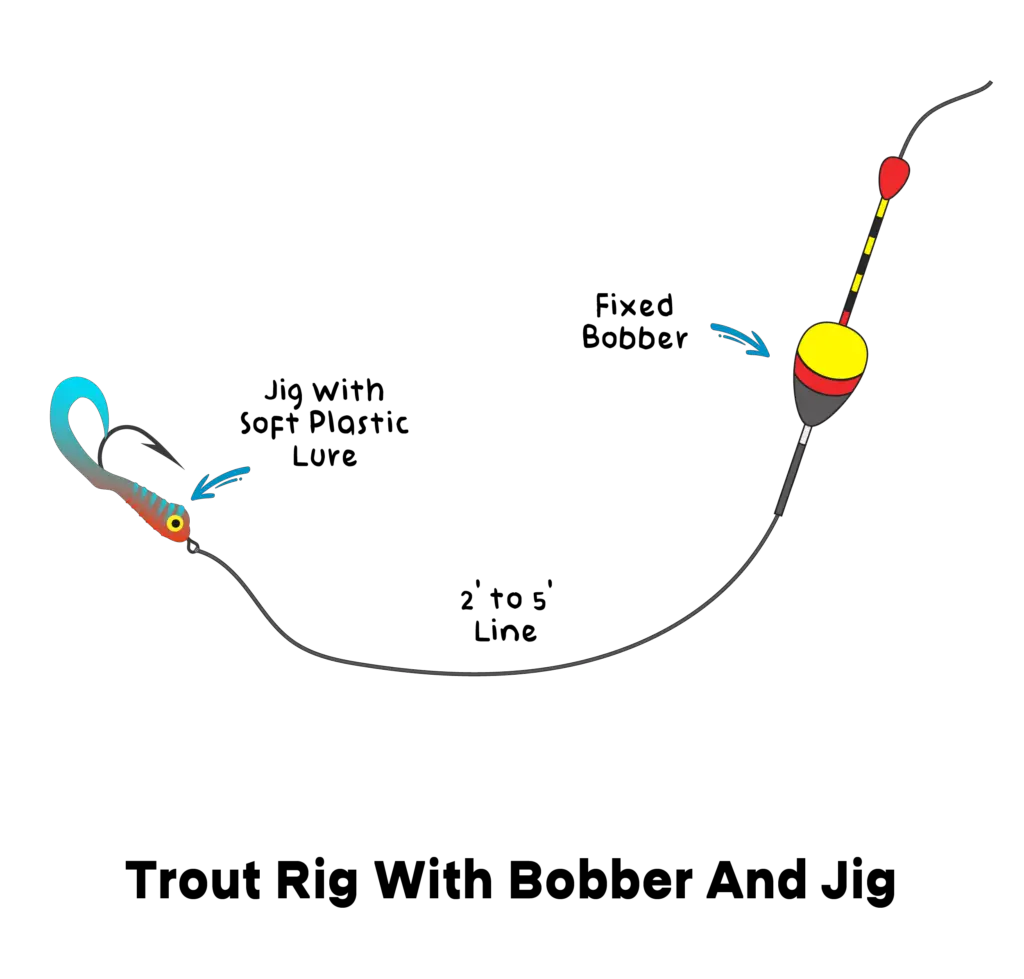
If you do encounter weeds however this rig is just the one to try. It can be fished slowly so there is less chance of getting tangled up in weeds. This is because the jig is a lead sinker and hook which are molded into one piece of kit.
The soft body of the jig makes it resistant to snagging but simultaneously mimics the movement and color of a bait fish. The rig is moved vertically through the water and attracts trout through jerky movements.
How To Tie A Trout Rig With Bobber & Jig
- Decide if you are going to use a slip or a fixed bobber, this will usually depend on the depth of the water you are fishing.
- Set up one of these rigs as detailed above.
- Instead of a bait hook tie a ⅛ or 1/16 jig head to the end of the line.
- Attach your chosen lure to the jig head.
When To Use It
Use this rig when there is a lot of vegetation in the water and you want to keep the lure free from tangles. Trout in lakes and ponds will often feed in and around weed beds so it’s a good strike spot.
It is also a good rig to use for drift fishing in rivers,streams and creeks. You can also adjust the bobber to hold the lure just above the river or creek bed.
How To Use It
Cast the rig out and let it sink until the bobber is upright in the water, this will be its maximum depth. Then retrieve the jig about 4-5 feet from where it stopped. Then let it sink again.
Repeat this process. This has the effect of the lure moving vertically through the water as a natural looking prey and attracting trout.
Ned Rig
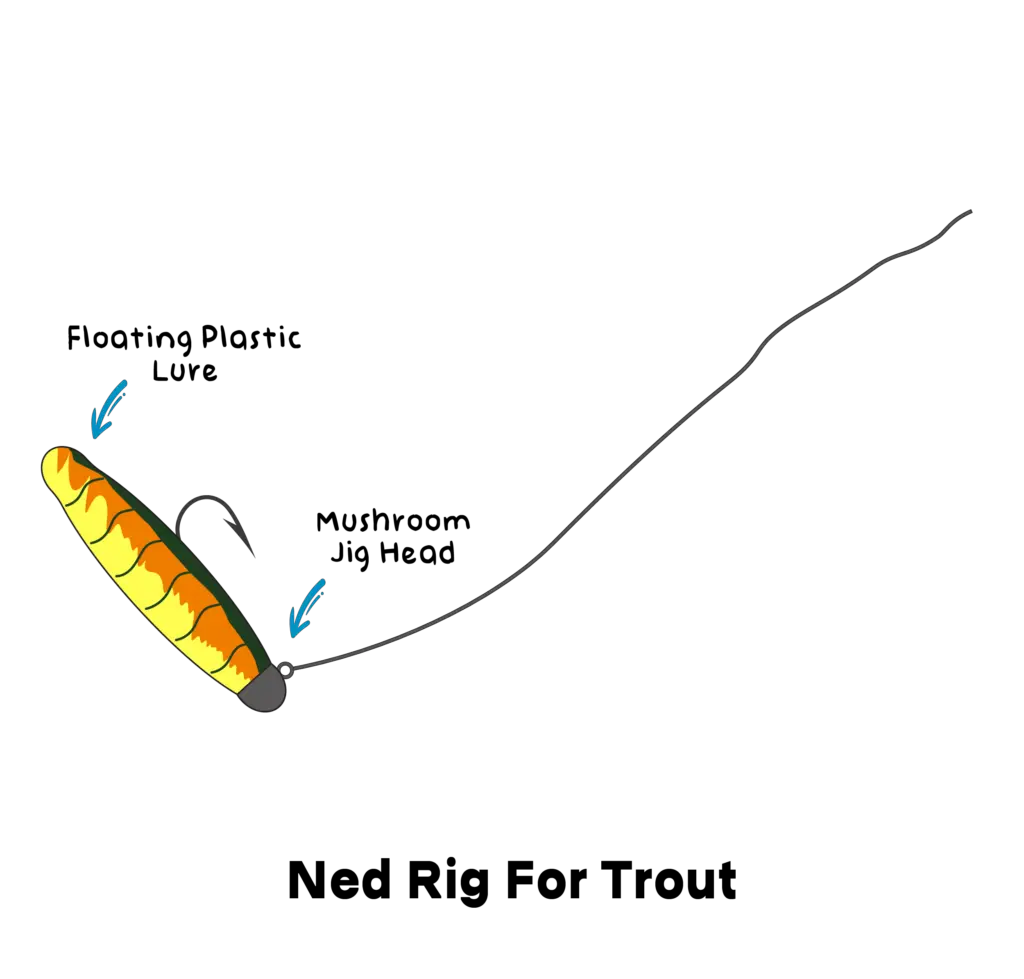
The ned rig is more commonly used when fishing for bass but it is surprisingly effective at catching trout too. This is because it is typically fished with a floating plastic tail which is perfect for trout fishing.
This is the easiest rig of all and can be used by beginners and novice anglers.
How To Tie A Ned Rig
- If using fluorocarbon line, tie the mushroom jig head directly to it.
- If you are using braided fishing line, tie a 2-4 foot fluorocarbon leader to your main line.
- Attach the jig head to the end of the leader.
When To Use It
It works equally well in streams, rivers and lakes and can be used when trout are feeding close to the bottom. However, weed beds will cause it to snag so avoid using it in heavily vegetated waters.
How To Use It
Cast out the rig and let it go right to the bottom then retrieve 3-4 feet using a jerky motion. Let it sink again and repeat the process until you get a bite.
Final Thoughts
We hope this guide has helped you in your search for the 9 most important trout rigs. As we have seen, the best rig is completely dependent on your personal preference, the type of trout fishing you typically do and the water that you will be fishing.
Different approaches require different rigs but there is definitely one or two rigs that will be perfect for you on your next fishing trip. Happy hunting!
- Do You Need An Indicator For Nymph Fishing? - November 16, 2023
- Fishing Safety Tips For Families - September 25, 2023
- What Is The Best Time To Night Fish At A Lake? - September 18, 2023



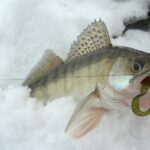
![Fly Fishing for Beginners [Ultimate Guide to Catching Fish] fly fishing for beginners](https://irvinelake.net/wp-content/uploads/2022/11/fly-fishing-man-150x150.png)

